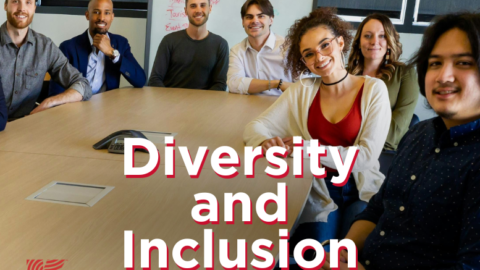Imagine yourself in the shoes of someone who has just been promoted to their first leadership role. This may have been you some years ago. Or perhaps you are early in your career and it’s something you aspire to. Either way, chances are you felt/would feel: excited, proud, curious, and maybe just a tad bit…anxious. What’s expected of me? What will change? Will I succeed? How…do…I…lead?
As I discussed in my last blog, Sink or Swim is Not Leadership Development, all too often new leaders are thrown into the role and left to their own devices for answers to these questions. Expectations are not clarified until the unspoken goes unmet. No preparation for the change in peer relationships and broader accountability. And the answer to “how do I lead?” usually becomes, “the way I’ve been led,” which isn’t necessarily the path to success.
Organizations need to give new leaders a strong start with a well-defined and consistently implemented leadership development program. In the course of my career, I’ve created and delivered many leadership initiatives. Here are what I’ve found to be “best practices” when developing new leaders.
Duration. Conduct the training over at least a 6-month period to allow for shorter sessions, application of new learning, and feedback. Learning is a process, not an event.
Mentor. Each new leader should have a seasoned leader mentor. Ideally, this is someone other than their immediate leader.
Commitment. Both the new leader and their immediate leader sign a contract committing to the development program. The new leader to participate and complete it, the immediate leader to support and reinforce the learning.
Regularly scheduled short workshops. These can be weekly or bi-weekly, but should be regularly scheduled over the course of the program and a priority for all involved. (This is where the commitment comes in). For weekly workshops, I recommend two hours on the same day each week. For bi-weekly, you may want to go a little bit longer. Topics should be built around what it means to be a leader in your organization – expectations and responsibilities, managing vs. leading. I also recommend including sessions on effective communication, resolving conflict, team building, coaching employees, and transitioning from peer to leader.
Self-discovery workshop. The best leaders are self-aware. Giving new leaders the opportunity to understand themselves – how they communicate, how they interact, how they are likely to lead – early on, increases the likelihood that they will adapt successfully to the role. I use the Lumina Spark assessment for this. Done in a workshop setting, it also helps leaders gain a better understanding of others, which will help them successfully lead the individuals on their teams.
Individual Development Plans. Throughout the program, participants should be receiving regular feedback from their immediate leader as well as guidance and feedback from their mentor. Upon graduation from the program, each participant should work with his/her leader to identify strengths and development areas to create a 12-month IDP.
A few other components I’ve also used in the past with positive results are: a syllabus of reading materials – books, white papers, articles, on leadership topics; having participants work in teams to research and present on one of the topics outlined in the program; and creating a “New Leader Forum” where new leaders get together to share issues and ideas, with alternating senior leader facilitators.
“Winning companies win because they have good leaders who nurture the development of other leaders at all levels of the organization.” — Noel Tichy
Till next time,
Karen









